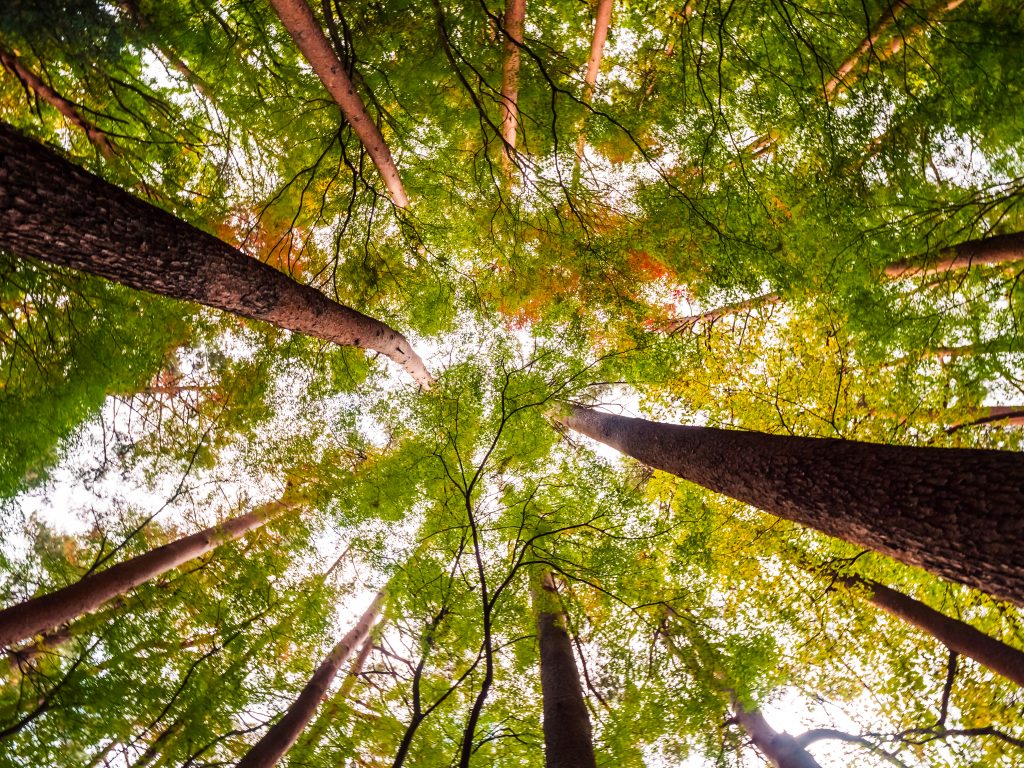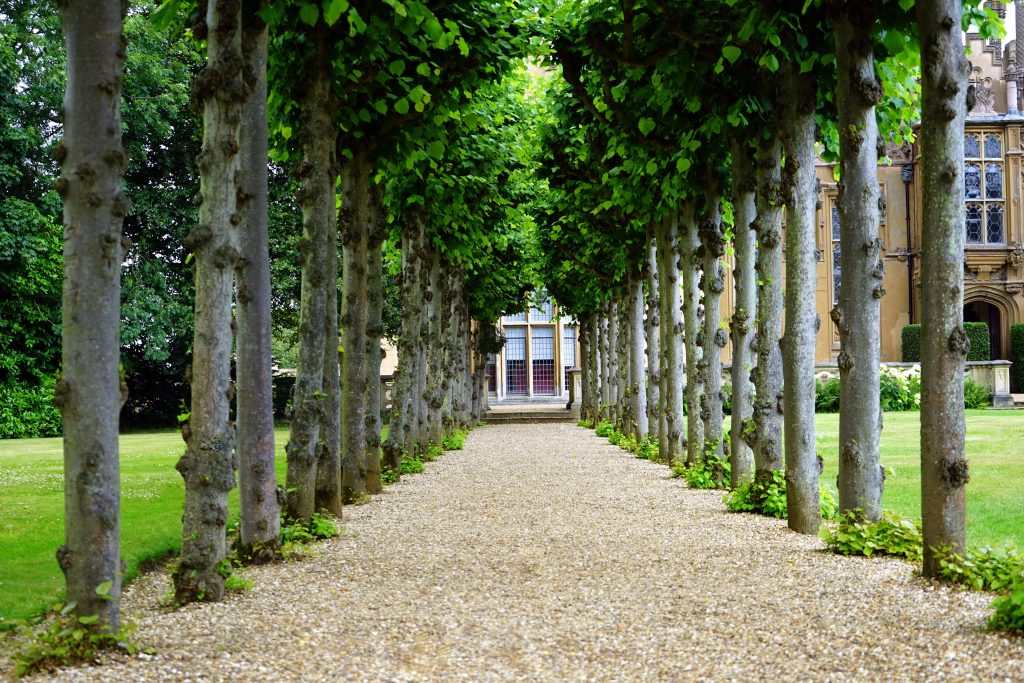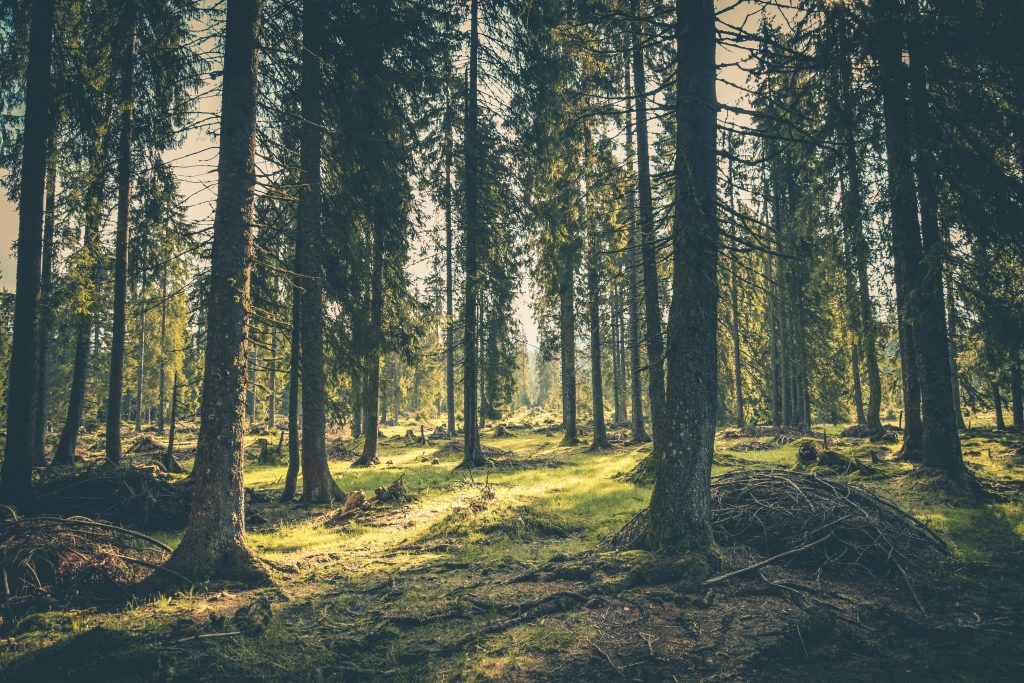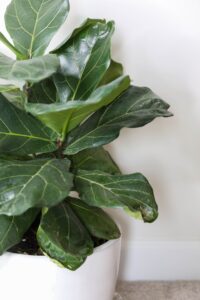THE SCIENCE BEHIND HOW TREES IMPROVE WATER QUALITY
THE SCIENCE BEHIND HOW TREES IMPROVE WATER QUALITY
Water quality is of paramount importance for both human health and maintaining the delicate balance of ecosystems. Clean and safe water is essential for sustaining life, supporting various ecological processes, and ensuring the well-being of both human populations and the environment. Here’s an explanation of the significance of water quality:

- Human Health:
- Access to clean and safe drinking water is crucial for preventing waterborne diseases and ensuring public health.
- Contaminated water can contain harmful pathogens, bacteria, viruses, and pollutants that can lead to illnesses, including gastrointestinal infections, cholera, and other serious health issues.
- Safe Food Production:
- Water quality plays a vital role in agriculture and food production, as water is used for irrigation, livestock, and aquaculture.
- Contaminated water can introduce pathogens and pollutants into crops, livestock, and fisheries, affecting the safety of the food supply.
- Economic Impact:
- Poor water quality can lead to economic losses due to increased healthcare costs, reduced agricultural productivity, and decreased tourism revenue in areas with contaminated water bodies.
- Ecosystem Services:
- Aquatic ecosystems provide essential services such as water purification, nutrient cycling, and habitat support for countless species.
- Clean water supports healthy ecosystems, which, in turn, contribute to ecosystem services like flood regulation, climate regulation, and biodiversity conservation.
- Biodiversity Conservation:
- Healthy water bodies support diverse aquatic habitats, providing homes for various species of fish, plants, insects, and other organisms.
- Clean water is vital for maintaining biodiversity and preserving the balance of ecosystems.
- Water Resource Management:
- Water quality is critical for sustainable water resource management, ensuring that water is available for various uses, such as drinking, agriculture, industry, and recreation.
- Poor water quality can lead to water scarcity and conflicts over water resources.
- Recreation and Aesthetics:
- Clean water bodies provide opportunities for recreational activities like swimming, boating, and fishing.
- Aesthetic and recreational value of water bodies contribute to the overall quality of life in communities.
- Aquatic Habitats and Species Health:
- Aquatic organisms, including fish, amphibians, and invertebrates, are highly sensitive to changes in water quality.
- Poor water quality can lead to habitat degradation, decline in populations, and disruptions in the aquatic food chain.
- Climate Regulation:
- Aquatic systems, including rivers, lakes, and oceans, play a role in climate regulation by absorbing and storing heat and carbon dioxide.
- Water bodies with healthy ecosystems contribute to climate resilience and the global carbon cycle.
- Preventing Water Scarcity:
- Ensuring water quality helps prevent contamination of freshwater sources, reducing the need for costly water treatment processes.
- Protecting water quality contributes to the sustainability of water resources and helps prevent water scarcity.
In conclusion, water quality is vital for safeguarding human health, supporting thriving ecosystems, and maintaining essential ecosystem services. Ensuring clean and safe water is not only crucial for our own well-being but also for the preservation of biodiversity, ecological balance, and the sustainability of our planet.
How Trees Play a Crucial Role in Improving Water Quality
Trees play a crucial and multifaceted role in improving water quality by acting as natural filters, stabilizing soil, and reducing pollution runoff. Through various processes, trees contribute to cleaner and healthier water bodies, benefiting both human populations and ecosystems. Here’s how trees play a vital role in improving water quality:

- Filtration of Rainwater and Runoff:
- Trees intercept and absorb rainwater, reducing the force of raindrops hitting the ground and preventing soil erosion.
- This interception minimizes the direct impact of rain on soil, helping to prevent sedimentation and the transport of pollutants into water bodies.
- Absorption of Pollutants:
- Tree roots absorb and filter pollutants, such as heavy metals, nutrients, and contaminants, from the soil.
- Pollutants that are absorbed by tree roots are less likely to leach into groundwater or be carried by runoff into streams and rivers.
- Sediment Trapping:
- Tree canopies slow down rainwater as it falls, allowing sediment particles to settle on leaves and branches.
- By trapping sediments, trees prevent soil erosion and reduce the amount of sediment that enters water bodies.
- Nutrient Uptake:
- Trees absorb excess nutrients, such as nitrogen and phosphorus, from the soil through their roots.
- This nutrient uptake prevents nutrient runoff into water bodies, which can lead to eutrophication, algal blooms, and water pollution.
- Erosion Prevention:
- Trees help stabilize soil with their extensive root systems, preventing soil erosion caused by rain and water movement.
- By holding soil in place, trees reduce sediment runoff and the introduction of particles into water bodies.
- Riparian Zone Protection:
- Riparian zones are areas along water bodies where trees and vegetation are present.
- Trees in riparian zones protect against bank erosion, filter pollutants from runoff, and create a buffer between land-based activities and water bodies.
- Phytochemical Effects:
- Trees release natural compounds known as phytochemicals into the soil and water.
- These phytochemicals can break down or immobilize pollutants, contributing to water quality improvement.
- Carbon Sequestration and pH Balance:
- Trees sequester carbon dioxide from the atmosphere, reducing its concentration in water bodies and stabilizing pH levels.
- Balanced pH levels are essential for aquatic ecosystems and the organisms they support.
- Stormwater Management:
- Urban trees play a role in managing stormwater by absorbing rainwater and reducing runoff.
- This reduces the volume of stormwater entering drainage systems, preventing the transport of pollutants into water bodies.
- Temperature Regulation:
- Trees provide shade, which helps regulate water temperature in aquatic ecosystems.
- Cooler water temperatures support healthy aquatic habitats and prevent thermal pollution.
In conclusion, trees are nature’s allies in improving water quality. Through their capacity to filter, absorb, and stabilize, trees mitigate the impacts of pollution, sedimentation, and runoff on water bodies. By recognizing the vital role of trees and preserving and restoring forested areas, we can contribute to cleaner, healthier water resources that benefit both human communities and the environment.
How Trees Act as Natural Filters for Rainwater and Runoff
Trees act as natural filters for rainwater and runoff by intercepting, slowing down, and absorbing water, which helps remove pollutants and prevent sedimentation before water reaches streams, rivers, and other water bodies. This natural filtration process plays a crucial role in improving water quality and protecting aquatic ecosystems. Here’s how trees function as natural filters for rainwater and runoff:

- Interception of Rainwater:
- When rain falls, trees intercept a significant portion of the water on their leaves, branches, and stems.
- This interception reduces the impact of raindrops on the ground, preventing soil erosion and the dislodging of particles into water bodies.
- Slowing Down Runoff:
- Trees contribute to slowing down the movement of rainwater over the land surface.
- As rainwater encounters the tree canopy and its foliage, the water is dispersed and directed in multiple directions, reducing the speed at which it flows.
- Surface Filtration:
- Leaves and branches of trees serve as surfaces that filter rainwater as it flows across them.
- Particles such as dust, debris, and pollutants are captured and held on the tree’s surfaces, preventing them from entering water bodies.
- Absorption by Roots:
- Tree roots absorb rainwater and runoff from the soil, which helps prevent the water from carrying soil particles and contaminants into water bodies.
- The absorption process allows trees to remove pollutants such as heavy metals, nutrients, and organic compounds from the water.
- Soil Binding and Sedimentation Prevention:
- Tree root systems bind soil particles, stabilizing the soil structure and reducing erosion caused by water movement.
- By preventing soil erosion, trees help maintain the integrity of the surrounding landscape and prevent sediment from entering water bodies.
- Microbial Action:
- Soil under trees is rich in microbial life that aids in breaking down and decomposing organic matter.
- Microbial activity contributes to the natural degradation of pollutants, improving water quality.
- Buffer Zones and Riparian Areas:
- Trees in riparian areas (along rivers, streams, and lakes) create buffer zones that filter runoff before it enters water bodies.
- These buffer zones allow rainwater to pass through layers of vegetation and soil, removing contaminants in the process.
- Preventing Nutrient Runoff:
- Trees absorb excess nutrients like nitrogen and phosphorus from the soil.
- By preventing these nutrients from leaching into water bodies, trees reduce the risk of nutrient pollution and harmful algal blooms.
- Enhancing Infiltration:
- Tree roots help create channels in the soil that facilitate water infiltration.
- Improved infiltration allows rainwater to percolate into the ground, reducing runoff and the transport of pollutants.
- Promoting Groundwater Recharge:
- Trees contribute to groundwater recharge by allowing rainwater to gradually infiltrate the soil and replenish underground aquifers.
- This replenishment of groundwater resources helps maintain water availability and quality.
In summary, trees act as natural filters for rainwater and runoff by intercepting, slowing down, and absorbing water. Through this process, trees remove pollutants, prevent sedimentation, and protect water bodies from the negative impacts of runoff. Preserving and restoring tree cover is essential for maintaining the natural filtration capacity of ecosystems and ensuring cleaner, healthier water resources.
About Murray, Utah
Murray is a city situated on the Wasatch Front in the core of Salt Lake Valley in the U.S. state of Utah. Named for territorial governor Eli Murray, it is the state's fourteenth largest city. According to the 2020 census, Murray had a population of 50,637. Murray shares borders with Taylorsville, Holladay, South Salt Lake and West Jordan, Utah. Once teeming with heavy industry, Murray's industrial sector now has little trace and has been replaced by major mercantile sectors. Known for its central location in Salt Lake County, Murray has been called the Hub of Salt Lake County. Unlike most of its neighboring communities, Murray operates its own police, fire, power, water, library, and parks and recreation departments and has its own school district. While maintaining many of its own services, Murray has one of the lowest city tax rates in the state.
Neighborhoods in Murray, Utah
Murray Oakes, Grant Park, Southwood Park, Murray Park, Murray Park Restrooms, Willow Pond Park, Neighborhood Veterinary Care
Things To Do in Murray, Utah
Bus Stops in Murray, Utah to Truco Services, Inc.
Bus Stop in Murray Central Station (Bay C) Murray, Utah to Truco Services, Inc.
Bus Stop in State St @ 4801 S Murray, Utah to Truco Services, Inc.
Bus Stop in Murray North Station Murray, Utah to Truco Services, Inc.
Bus Stop in State St @ 4949 S Murray, Utah to Truco Services, Inc.
Bus Stop in Murray Central Frontrunner/Trax Station Murray, Utah to Truco Services, Inc.
Bus Stop in Murray Blvd / Vine St (SB) Murray, Utah to Truco Services, Inc.
Bus Stop in State St @ 3925 S Murray, Utah to Truco Services, Inc.
Bus Stop in State St @ 4824 S Murray, Utah to Truco Services, Inc.
Bus Stop in State St @ 5223 S Murray, Utah to Truco Services, Inc.
Bus Stop in Murray Blvd / Allendale Dr (NB) Murray, Utah to Truco Services, Inc.
Bus Stop in Murray Blvd @ 5039 S Murray, Utah to Truco Services, Inc.
Bus Stop in State St @ 4721 S Murray, Utah to Truco Services, Inc.
Driving Directions in Murray, Utah to Truco Services, Inc.
Driving Directions from Woodruff Tree Trimming and Removal to 4640 Commerce Dr, Murray, UT 84107, USA
Driving Directions from Reliable Tree Care to 4640 Commerce Dr, Murray, UT 84107, USA
Driving Directions from Tree Pro-Tech to 4640 Commerce Dr, Murray, UT 84107, USA
Driving Directions from Prestige Tree And Landscape to 4640 Commerce Dr, Murray, UT 84107, USA
Driving Directions from Excellence Tree & Landscape to 4640 Commerce Dr, Murray, UT 84107, USA
Driving Directions from Amen Trees to 4640 Commerce Dr, Murray, UT 84107, USA
Driving Directions from Tim's Tree Care to 4640 Commerce Dr, Murray, UT 84107, USA
Driving Directions from Jordan Tree Service - Murray to 4640 Commerce Dr, Murray, UT 84107, USA
Driving Directions from Arbor Works to 4640 Commerce Dr, Murray, UT 84107, USA
Driving Directions from Diamond Tree Experts to 4640 Commerce Dr, Murray, UT 84107, USA
Driving Directions from Green Tree Arborist to 4640 Commerce Dr, Murray, UT 84107, USA
Driving Directions from TruCo Services to 4640 Commerce Dr, Murray, UT 84107, USA
Reviews for Truco Services, Inc. Murray, Utah
Emily Abercrombie
We had a great experience with TruCo! They were well priced, responsive and prompt. Michael was a pleasure to work with and gave us advice on which plants to put in where we took out our ugly old shrubs. I would highly recommend this company!!!
Michelle Turpin
TruCo Services gets 5 stars from us for customer service. We experienced a few issues with their services this last year and Rob Eccles in senior management, stepped in and immediately handled our issues. He was very committed to making sure they understood our expectations and would execute to make us happy.
Siobhan Billingsley
I work for a property management company and have the pleasure of working with Rob at a community in Sandy. He has been incredible to work with and always responds in a timely manner. He knows all the homeowners by name and address and is aware of all the "problem" areas when it comes to sprinklers. I never have to worry about following up with him because he always reaches out to provide me with an update. If you're looking to work with someone who takes pride in their job, is professional, and can solve the worst landscaping problems thrown your way, Rob is your guy. Thank you, Rob for all you do!
Jaime S.
We have used Truco at 2 of the complexes we manage, they have been great to work with. Good quality service, outstanding customer service with good communication. That's hard to find these days. I highly recommend them. Travis has been awesome to work with.
Jerusha Smart
We use TruCo for a majority of our properties and our home. While other landscaping companies we use come and go for various reasons like cost, communication issues, work performance, etc., TruCo is always consistent in price and work. Also, Rob is the best.
